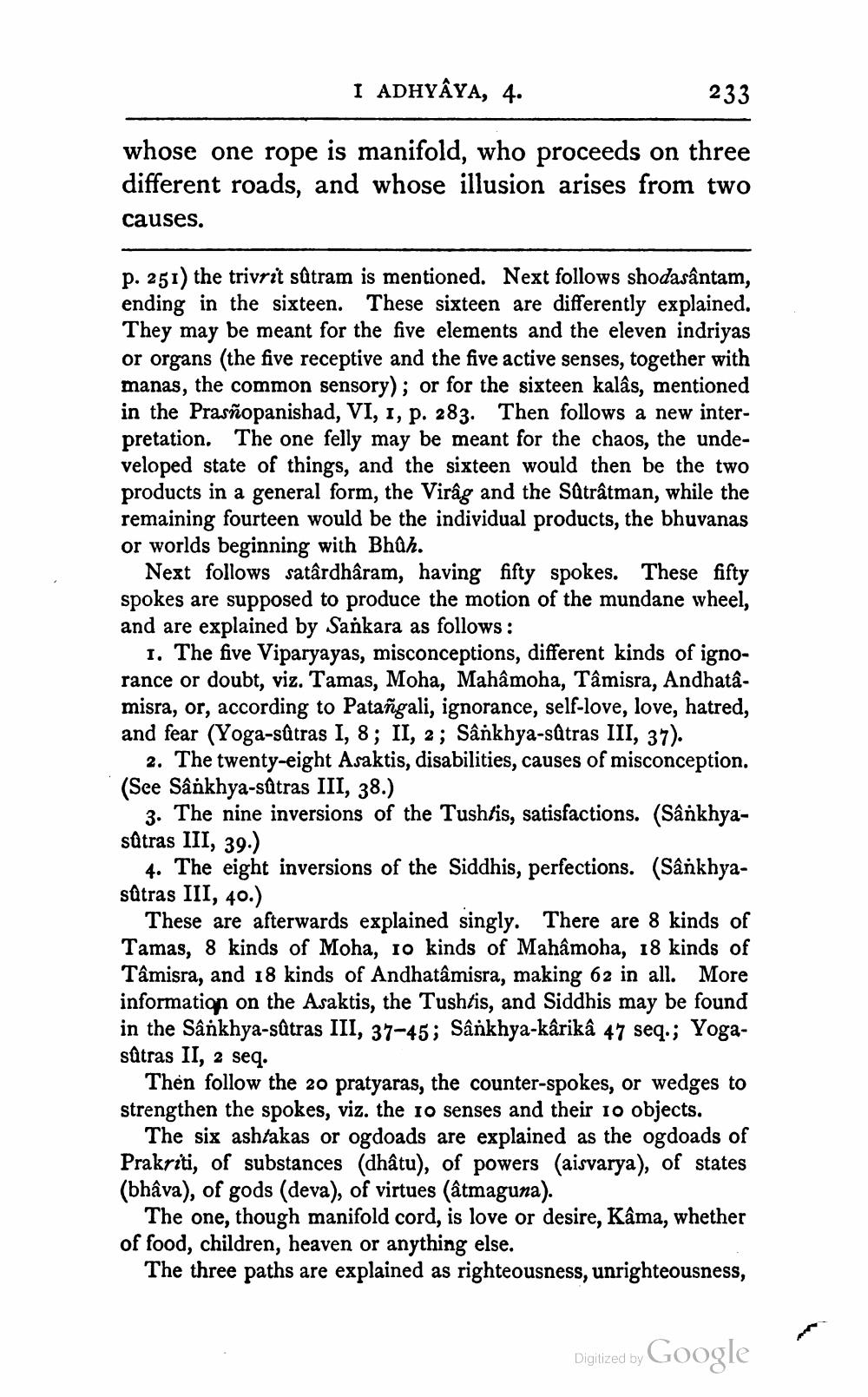________________
I ADHYAYA, 4.
233
whose one rope is manifold, who proceeds on three different roads, and whose illusion arises from two
causes.
p. 251) the trivrit sâtram is mentioned. Next follows shodasântam, ending in the sixteen. These sixteen are differently explained They may be meant for the five elements and the eleven indriyas or organs (the five receptive and the five active senses, together with manas, the common sensory); or for the sixteen kalâs, mentioned in the Prasñopanishad, VI, 1, p. 283. Then follows a new interpretation. The one felly may be meant for the chaos, the undeveloped state of things, and the sixteen would then be the two products in a general form, the Virâg and the Sætrâtman, while the remaining fourteen would be the individual products, the bhuvanas or worlds beginning with Bhůh.
Next follows satârdhâram, having fifty spokes. These fifty spokes are supposed to produce the motion of the mundane wheel, and are explained by Sankara as follows:
1. The five Viparyayas, misconceptions, different kinds of ignorance or doubt, viz. Tamas, Moha, Mahâmoha, Tâmisra, Andhatamisra, or, according to Patañgali, ignorance, self-love, love, hatred, and fear (Yoga-sâtras I, 8; II, 2; Sânkhya-sâtras III, 37).
2. The twenty-eight Asaktis, disabilities, causes of misconception. (See Sânkhya-sâtras III, 38.)
3. The nine inversions of the Tushtis, satisfactions. (Sânkhyasâtras III, 39.)
4. The eight inversions of the Siddhis, perfections. (Sânkhyasâtras III, 40.)
These are afterwards explained singly. There are 8 kinds of Tamas, 8 kinds of Moha, 10 kinds of Mahamoha, 18 kinds of Tâmisra, and 18 kinds of Andhatâmisra, making 62 in all. More information on the Asaktis, the Tushtis, and Siddhis may be found in the Sânkhya-sâtras III, 37-45; Sânkhya-kârikâ 47 seq.; Yogasâtras II, 2 seq.
Then follow the 20 pratyaras, the counter-spokes, or wedges to strengthen the spokes, viz. the 10 senses and their ro objects.
The six ashtakas or ogdoads are explained as the ogdoads of Prakriti, of substances (dhâtu), of powers (aisvarya), of states (bhấva), of gods (deva), of virtues (âtmaguna).
The one, though manifold cord, is love or desire, Kâma, whether of food, children, heaven or anything else.
The three paths are explained as righteousness, unrighteousness,
Digitized by Google




